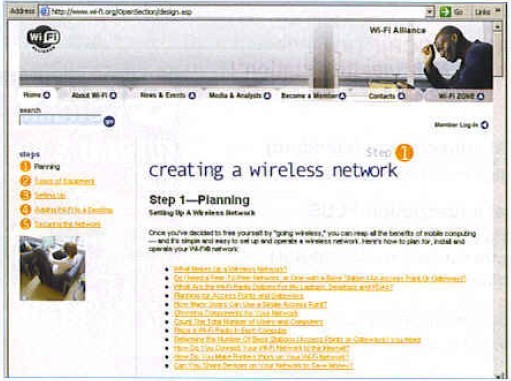

Project Solutions
Free Internet must exist
Published:2011/8/22 2:20:00 Author:Li xiao na From:SeekIC
By David Daamen 
Of course, there’s no such thing as free Internet, but surely that does not mean you have to pay the bill? Today, with a little ingenuity and some experimentation it is often possible to tap into a neighbor’s wireless network, if it is not, or not sufficiently, protected. Many people use WLAN and WiFi equipment out of the box and totally forget about installing or even enabling encryption. The result: lots of ’free’ Internet access points!
Sheer negligence and "Dilbert’s Boss thinking’ are not the only reasons for (he occasional hubbub in the press about (corporate) networks being easily accessible by any WiFi user within radio range. The phenomenon is not just caused by weak encryption technologies, but also by many private computer users and professional system operators being sloppy in their dealing with encryption keys and passwords.
In many cases, no encryption key is set up at oil, resulting in a system that’s about as open as it gets and consequently allowing ’fee Internet access by any non-authorized user within radio range.
Hacking
In practice, however, totally open systems are o rarity. Using software like ’Airopeek’ you can get a quick overview of what’s on the air in your area, and which networks are protected. The three most popular encryption standards ore listed in the table, together with the less than respectful nicknames given to them by hackers — clearly, WEP is the least powerful standard. Unfortunately for should we say luckily), WEP is currently the widest used standard — and highly vulnerable it is.
Putting aside the question whether breaking into o protected wireless network is immoral or even illegal, it is o fact that free Internet access is perfectly possible.
Countermeasures
Of course, you do not want unauthorized users appearing on your wireless network. Now that you are aware that the greatest imperfection is in the standard(s) used to protect the system, it is fairly easy to come up with effective countermeasures.
The obvious choice would be an access point employing WPA {WiFi protected access) based on the 802.1 li standard. However, if you already have a router having just WEP, check it it is possible to employ ’authentication’. Using the 802. lx standard that’s common for these systems, a new connection/session key is assigned to a user any lime he/she logs onto the network. This does, however, require an authentication server (RADIUS; remote authentication dial-in user service] but there are also access points on the market that have such a server as an integrated facility. This setup no longer allows eavesdropping on the traffic curried by the access point using a previously ’hacked’ or stolen key. Moreover, the key is invalidated when the session is over. For continued protection, o recommended procedure is to log out and on again from time to lime.
Besides RADIUS there are other measures that can help to increase system security. A step-by-step guide to commissioning a wireless network may be found at [4] where security gets a lot of attention.
Legal
Finally, we would like lo mention a few links to so-called ’hotspot directories’. These are guides on the internet listing locations of publicly accessible wireless networks. However, most access points found in these directories are not actually ’free’ and access has to be paid for. Paid-up service or not — here, too, poorly protected networks are an open invitation lo hackers.
Reprinted Url Of This Article: http://www.seekic.com/blog/project_solutions/2011/08/22/Free_Internet_must_exist.html
Print this Page | Comments | Reading(443)
Article Categories
New published articles
· Imagination works with TSMC to develop FinFET process
Author:Ecco Reading(32820)
· XMOS pushes event-driven MCUs with lower price
Author:Ecco Reading(3526)
· Intel brings upgraded 32-nm SoC for smartphones
Author:Ecco Reading(3246)
· Micron pushes TLC 128-Gbit NAND flash
Author:Ecco Reading(3801)
· Intel will stop supplying desktop motherboards
Author:Ecco Reading(5331)
· Processor market was expected to regain strength in 2013
Author:Ecco Reading(3315)
· It was reported that TSMC sales fall steeply
Author:Ecco Reading(3462)
· Cisco, NXP work with auto wireless startup
Author:Ecco Reading(3604)
· Micron was impacted by manufacturing glitch
Author:Ecco Reading(4009)
· China can make 22-nm transistor by themselves
Author:Ecco Reading(3807)
· Chip market rebound is coming, according to survey
Author:Ecco Reading(3748)
· Sony, Toshiba will spend more on chips, iSuppli reports
Author:Ecco Reading(3780)
· Qualcomm becomes the 13th company to join NFC Forum board
Author:Ecco Reading(6094)
· TSMC increases building work for FinFET fab
Author:Ecco Reading(3764)
· TI plans to cut 1,700 jobs in OMAP shift
Author:Ecco Reading(4579)